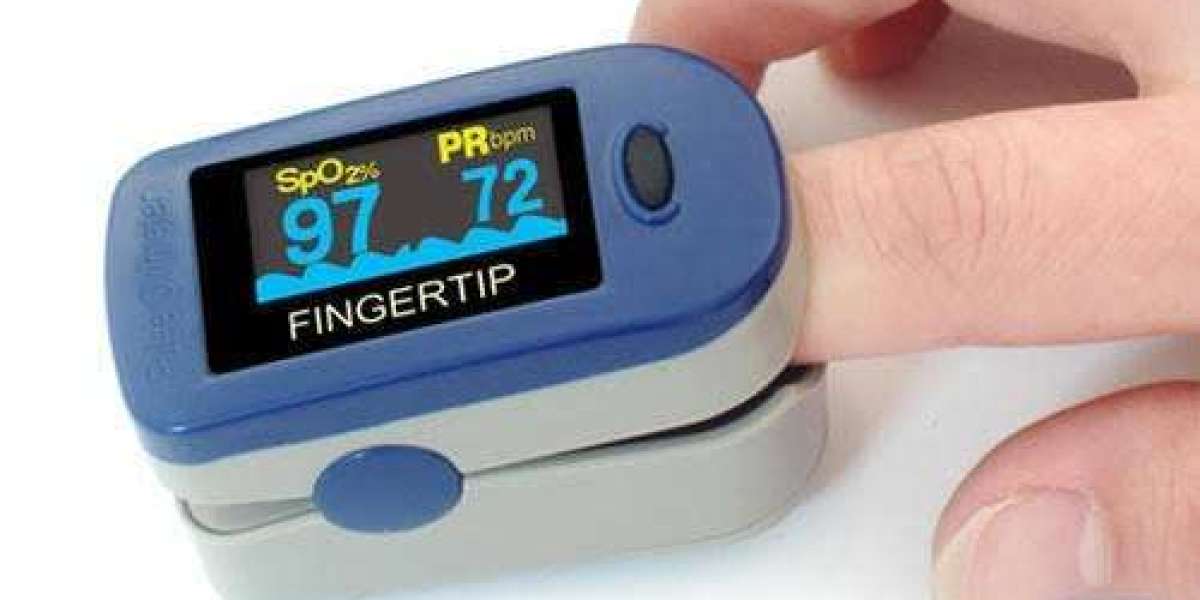In recent years, the pulse oximeter market has undergone a transformative evolution, driven by technological advancements, increasing health awareness, and the global push for remote patient monitoring. Once limited to hospitals and clinical environments, pulse oximeters have now become commonplace in homes, fitness centers, and even wearable devices. The innovations shaping this market are not only enhancing accuracy and convenience but also redefining how oxygen saturation (SpO₂) and heart rate are monitored across various demographics.
Miniaturization and Wearable Integration
One of the most significant trends in pulse oximeter innovation is miniaturization. Manufacturers are creating smaller, more efficient sensors that can be integrated into wearable technologies like smartwatches, rings, and fitness bands. Companies like Apple, Garmin, and Fitbit have already incorporated SpO₂ monitoring into their flagship devices, allowing continuous tracking without the need for standalone equipment.
This seamless integration empowers users to monitor their health in real-time, encouraging early detection of respiratory issues, sleep apnea, and even COVID-19-related hypoxia. Moreover, these wearables often sync with mobile applications, giving users and healthcare providers access to long-term data trends, which aids in better health management.
Enhanced Accuracy and Signal Processing
Traditional pulse oximeters can be prone to errors due to motion artifacts, poor perfusion, or dark skin tones. Innovations in signal processing algorithms are tackling these issues head-on. Advanced oximeters now use multi-wavelength technology, artificial intelligence (AI), and machine learning (ML) to improve accuracy even in challenging environments.
Some next-generation models incorporate adaptive filtering techniques that distinguish between true physiological signals and noise caused by patient movement or external interference. Others adjust for skin pigmentation or ambient light, delivering more reliable results across diverse patient populations.
Connectivity and Telehealth Integration
With the rise of telemedicine, pulse oximeters have become vital tools for remote patient monitoring. Bluetooth- and Wi-Fi-enabled devices can now transmit data directly to healthcare providers, enabling timely interventions and reducing the need for in-person visits. These innovations are particularly beneficial for patients with chronic conditions such as COPD, asthma, and heart failure.
In response to the COVID-19 pandemic, many health systems adopted home monitoring kits equipped with pulse oximeters, thermometers, and blood pressure monitors. This model continues to gain traction, especially in rural or underserved areas where access to healthcare facilities is limited.
Multi-Parameter Monitoring Devices
The future of pulse oximetry lies in multifunctional devices that go beyond measuring oxygen saturation and pulse rate. New entrants in the market are combining pulse oximetry with other health metrics such as respiratory rate, blood pressure, ECG, and temperature. These all-in-one solutions provide a more comprehensive picture of a patient’s health status.
For instance, some clinical-grade oximeters now feature plethysmograph waveform displays, perfusion index readings, and even hydration monitoring. This convergence of technologies enhances diagnostic capabilities, especially in critical care and surgical settings.
Pediatric and Neonatal Innovations
Pediatric and neonatal care presents unique challenges for pulse oximetry, such as smaller extremities and heightened sensitivity to pressure and temperature. Recent innovations include soft, flexible sensors designed specifically for infants and preterm babies. These sensors ensure gentle contact, minimize discomfort, and provide accurate readings during movement or rest.
Wireless, skin-friendly adhesives with built-in sensors are becoming more common in neonatal intensive care units (NICUs), allowing for less intrusive monitoring and more parental bonding time.
Environmental and Sustainable Design
Sustainability is becoming a key focus in medical device manufacturing, and pulse oximeters are no exception. Companies are exploring biodegradable materials, rechargeable power systems, and recyclable components to reduce environmental impact. Some newer models are solar-powered or use low-energy Bluetooth protocols to extend battery life and reduce electronic waste.
Regulatory Approvals and Standardization
As the market expands, regulatory bodies are playing a crucial role in ensuring device safety and efficacy. The U.S. FDA, European CE, and other authorities are updating their standards to accommodate innovations in consumer-grade pulse oximeters. This push for standardization promotes trust in new technologies and accelerates their adoption in both clinical and non-clinical settings.
The Road Ahead
The pulse oximeter market is on an exciting trajectory, with innovations bridging the gap between clinical accuracy and everyday usability. As AI-driven analytics, wearable integration, and telehealth connectivity continue to advance, pulse oximeters are poised to become indispensable tools in the global push for proactive and personalized healthcare.








